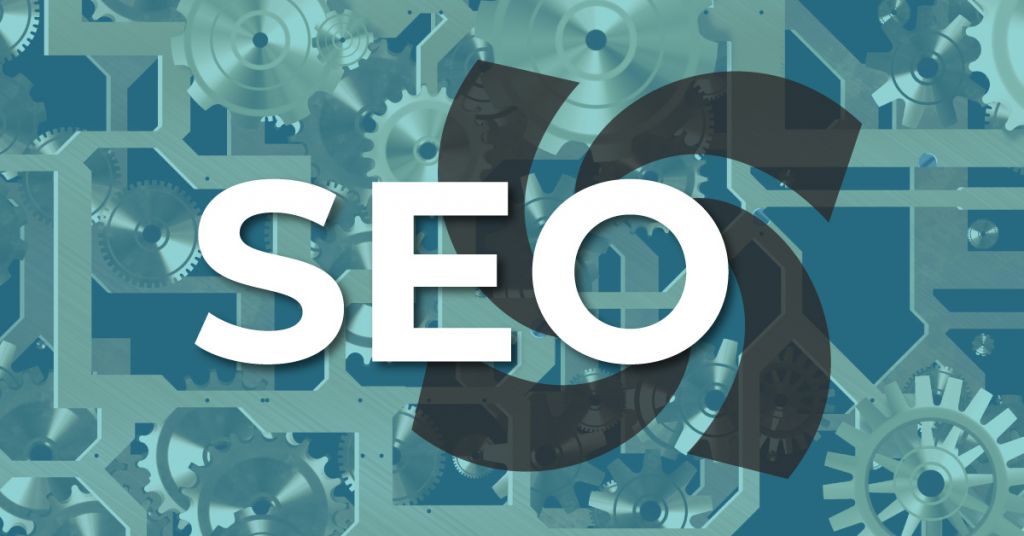When it comes to SEO, things are always changing, thanks to Google and other search engines, it’s a dynamic environment. Staying on top of trends can be a challenge; that’s why we’ve put together this guide. With our help, SEO in 2020 can be a breeze!
Some search engine optimization techniques from yesteryear are almost useless now, and SEO has grown into a more intellectual discipline that goes way beyond stuffing Google with links and keywords.
There are many sophisticated tactics to grow organic traffic, like keyword gap analysis, competitor gap analysis, link building and link profiles, content development, keyword optimizations, and so on. We will cover the most important below.
Now I know you scrolled this whole article already and are probably thinking – too long, didn’t read.
That’s kind of how I felt writing it. So if you’re like me and pressed for time, here’s the summary:
- Mobile-first – develop your website for mobile-first, making sure it’s a flawless user experience
- Optimize for site and page speed across all devices and browsers
- Use research to uncover the topics your audience is most interested in
- Look how those topics appear in web searches right now
- Generate the highest-quality content you can
- Think about natural language processing, write for humans yet be strategic
- Monitor your analytics – validate your efforts and continue to optimize
Arguably the most important thing is to create badass content. Simple, right? Seriously, though, create unique and original content that serves your user’s intent.
Figure out what that intent is and how you can provide relevant content – and create a ton of it. Technical SEO is still essential, so don’t skip it, but your primary focus should be generating content that users need and want to engage with.
There are several strategies you must utilize to be successful in SEO. So let’s dive in.

Every day at Diedrich RPM, we focus on four primary areas of SEO:
- Keyword targeting (including keywords and phrases)
- Keyword search volumes
- Organic traffic from search
- Conversions from our keywords
The SEO techniques we use are easy to remember with this simple acronym, C.O.L.T.:
- Content
- On-page optimization
- Link building
- Technical SEO
Focusing on these efforts is essential for every SEO campaign. As an agency, utilizing tracking to report on them allows us to be accountable to our clients and to optimize for effectiveness.
So, how do you take this information and apply it successfully?
We’re glad you asked!
We’ve designed this SEO guide to walk you through each stage and give you the tools necessary to run smooth SEO campaigns that grow organic traffic with ease.
How to Target Better Keywords and Phrases Today

To start, let’s look at keywords and keyword targeting.
Back in the day, keywords were it. It was simple; Keywords and keyword targeting. Keyword targeting involved creating pages and pages of content based on specific keywords and optimizing them accordingly.
All the content on these pages would be hyper-focused on the topic at hand.
Moving forward with SEO, technically, you could include related keywords and synonyms in a way that would improve your targeted keyword rankings.
The problem, however, is that keywords become redundant and too repetitive. You can run out of SEO topics in industry-related keywords very quickly, leaving you little room to move forward.
We used to optimize for keywords like this:
First, we would conduct keyword research, finding the highest-performing keywords and phrases in terms of search volume. Then we’d create a page for the keyword and inter-weave keywords throughout the content accordingly. No surprises here, old news.
On top of all that, there are many different types of keywords; changing our goals depending on which type of keyword is used:
- Short-Tail keywords
- Long-Tail Keywords
- Exact Match Keywords
- Branded Keywords
- Phrase Match Keywords
- Broad Match Keywords
- Negative Keywords
- Supporting Keywords/keyword synonyms
- Money Keywords
And many other keyword types.
Why the history lesson on keywords and targeting? You have to know where you’ve been to understand where you are going, especially as an SEO professional.
Recently, we’ve noticed a shift to topics and entities from keywords.
Topics are considered broader terms and concepts, less specific than keywords.
One thing to keep in mind, however, is that even though we see this shift, keywords are still an essential aspect of your SEO backbone.
What about entities? What are they exactly, anyway?
Entities in terms of SEO are places, persons, and things. Entities could be considered the most important new aspect of SEO. Google itself states that entities are “a thing or concept that is singular, unique, well-defined, and distinguishable.”
So at the end of the day, these are the main reasons to optimize for topics, entities, and keywords.
Are Topics Important in SEO? YES! How Important, though?

So if keywords are still the backbone of SEO, why should we focus on topics?
Well, it used to be an SEO best practice to create a page-per-keyword. Utilizing industry-standard tools like keyword research on SEM Rush or Google’s keyword planner.
With these tools, you’re able to find relevant topics for your site.
Which is fine if you’re only focusing on one topic, but what do you do if you need to post about several topics?
Here we’ll dive into multiple strategies to help. First up, content.
What is High-Quality Content?
When it comes to Google’s algorithm, it can have trouble trying to assess if your content is high enough quality.
Generally speaking, creating high-quality content is how you get your site to perform. But that can mean different things depending on various attributes of your marketing campaigns, such as:
- Your industry
- Website history (previous updates/changes and domain names)
- Current development (what are you doing now?)
- The digital competitiveness of your industry
- The activity of your competitors
- Changes in Google’s algorithm
Your industry:
There are variations in SEO, depending on your industry. However, we recommend staying up to date with SEO strategies, and not to get complacent once you’ve honed your approach.
Industries vary as times change, so do people and methods. The way you find out about these changes is through digital research—for example, a competitor gap analysis.
A competitor gap analysis will help you figure out how to leverage yourself against your competition (more on this in a bit).
There are lots of options to do this with industry-standard tools.
Things you want to focus on include insights like:
- Competitor rankings
- Competitor content schedule (how often are they posting/updating, what are they posting?)
- Backlinks – Does your competition have any, if so, where and how many?
- Competitor SEO (on-page and technical)
Will I See SEO Changes Right Away?

We get asked this question a lot. The short answer is no, not really.
When you make changes to your content and backlinks, it can take time for the internet to “catch up” so-to-speak. Bots need time to crawl and index these changes, and while we can see some improvements relatively quickly, some results can take weeks or months. On top of that, organic traffic is just that, organic. Just because you changed some things doesn’t necessarily mean the traffic you’re getting is a direct result. Sound confusing? Welcome to the fun and dynamic world of SEO. So, what do you do about it?
To see the full story, you need detailed data analysis to understand what’s going on.
Hence the reason SEO is so complicated – it’s not a natural correlation/causation paradigm.
Instead, SEO is far more involved with layers of algorithms. To add to the fun, Google changes those algorithms almost daily. The daily changes are usually minor, but every once in awhile, Google throws a curveball with a more extensive update that sends a ripple effect across the internet—often throwing off traffic to websites by large margins. Oh, and Google rarely shares these changes publicly. Fun, right?
The ones they choose to announce are usually the most devastating to website traffic, especially if you’re engaging in spammy practices or black-hat techniques.
Which brings us to our next topic: good vs. evil, muhwahahahaha, just kidding— good, approved-tactics versus bad, shunned-tactics.
Should I Be an SEO White Hat or Black Hat?

When it comes to SEO styles, there are a few paths to take, White Hat, Grey Hat, or Black Hat. Following all the rules, straying in between best practices and bleeding edge techniques, and flat out bending and breaking the rules.
White Hat SEOs strive to stay within Google’s Webmaster Guidelines, implementing procedures that are sustainable over-time, preventing Google from ever imposing penalties against them.
Ethical SEOs are all about transparency. They provide their clients with everything they do – providing all the details, the links they build, everything.
White Hats are ethical and transparent in their SEO duties, providing detailed reports that are easy to understand, which the client or SEO can take action on.
Black Hat SEOs push the boundaries about as far as they go– often, uncovering new limits as they go. It’s a game of cat and mouse between Google and Black Hats trying to find ways to outmaneuver each other.
Black Hats are masters of quick results that fade fast, achieving significant short-term results, but lacking long-term sustainability.
Black Hat SEOs use specialized software and programs to try and build links quickly across the web. They hope that these links will earn the #1 spot – that is, until Google catches on and changes their algorithm and shuts down their Google accounts.
Once that happens, the Black Hat’s only option is to start all over with a new domain.
A Grey Hat SEO falls in between both. Utilizing Black Hat techniques for research but not execution, then rolling out the best performing tactics in line with Google’s parameters. We find the most aggressive SEOs in this category. Remember, SEO is dynamic; it’s in your best interest to always be mindful of what’s new and adapt accordingly.
There’s nothing legally wrong with choosing Black Hat tactics, however, if you want to stay successful over time and stay on Google’s good side, then White or Grey Hat is your best option.
Where Do You Start with SEO?
Start with industry research. Even better, start with primary research on your customers.
Start by asking your customers how they search for services and products. With a survey or focus group, you can uncover what terms and phrases are used by your customers when searching. You can also ask how to best target your users and who they are exactly. With this information, you are better suited to conduct keyword research and build SEO strategies that perform.
After that, look into your competitors. See what they are using for keywords and how difficult it will be to rank for the keywords and phrases you want. Utilize industry-standard tools like semrush.com to conduct a competitor gap analysis.
A competitor gap analysis provides the roadmap to outmaneuver your competition. It provides guidance to see where your website is and where it needs to go.
After the research, it’s time to analyze your website.
You might think you know everything there is to know about your website, especially if you built it. But if you’re continually updating it, there are probably some errors. Conducting a thorough website analysis shows you where you’ve been and what needs to be improved. We’ve yet to come across a website that was 100% error-free.
The information from your website analysis is essential. It is your guide to making all the necessary improvements needed to sustain organic growth. If you get something wrong now, it can throw off your whole SEO plan, so make sure you get this part right from the start.
What Are Linked Profiles?

Your link profile is essential. It represents all the links directing to your website. Equally important are your competitor’s links. You should aim to understand both profiles.
Be careful, though, because this is where you can run into trouble. If you don’t understand SEO very well, what appears evident in terms of making a difference in traffic, may not be the whole story. Other factors might be in play that impacts traffic.
Herein lies the trouble.
If you skip the link analysis, and there are other factors impacting traffic, you may never be 100% sure what the variables are.
On the flip side, if you have visibility to all the variables, including link profiles, you might not be 100% correct on all the traffic, but you’ll have a better understanding of the root cause of improvements.
Remember, search is not a simple correlation equals causation. Traffic changes come from so many different variables; it’s often impossible to understand them all. That being said, the better you understand how the core variables impact traffic, the better you can leverage them.
What’s the Difference Between On-Page SEO & Technical SEO?
On-page SEO
Is precisely that– optimizations you make on the page. These could be front-end or back-end optimizations, but typically these refer to front-end development. Think about serving the user.
On-page SEO includes:
- Page optimizations to deliver value to the user
- Optimizations to provide an exceptional user experience
- Hyper-focused keyword targeting
- Easily shareable on social
- Works flawlessly across all devices and screen sizes
- Is indexable – bot/crawler friendly
- Optimized for readership, metadata, schema, and rich snippets
Technical SEO
This is for the birds… oops, I mean bots, and it shouldn’t be ignored. It’s something you should focus on. It is an area where you’ll have more control. Making your website crawler friendly is a great way to achieve targeted traffic growth. Think about serving the bots.
We don’t focus on any links or content with Technical SEO. It’s strictly back-end development.
You must learn to implement these Technical SEO tactics in 2020 to be successful:
- Mobile responsiveness
- Internal links
- Optimized URL structure
- Link Profile analysis
- Robots.txt. – Learn all there is to know about bots and how you elect they crawl your website
- Compatibility across browsers and platforms
- Navigation – optimize for user experience, reduce clicks wherever possible
- Schema.org markup
- URL Canonicalization
- Page error analysis
- Server/host analysis for speed and content deliverability
- Securing your website with an SSL certificate
- Page speed analysis
- Navigation on the page – accordions and next/back buttons
- Code optimization – best practices including accessibility, privacy, security (think WC3)
- Multilingual implementations and optimizations
How Do You Optimize For Search Intent? Great Question!
You might not have noticed just now, but we may have just served you up a slice of search intent content. How you ask? If you searched for “how to optimize for search intent,” or something similar, then Google may have shown you this content. Effectively providing you precisely what you’re looking for (my goal anyway). A detailed outline of search intent and how to optimize for it.
 Search intent optimizations have been around for over a decade. You’re simply creating content that serves the user in whatever capacity relative to your topic.
Search intent optimizations have been around for over a decade. You’re simply creating content that serves the user in whatever capacity relative to your topic.
You have to make sure your keywords highly match the user’s query.
For help, make sure to read Google Search Quality Raters Guidelines, this is essentially a roadmap on how to make your website the best it can be.
Google doesn’t create the guidelines; however, they contain essential insights to understanding how Google views search factors overall in a way you can translate into improving your E-A-T – Expertise, Authority, and Trust.
Here are a few important SEO factors you must be aware of:
- Strategic optimization of target keywords (including within the meta descriptions, H1s, sub-heading tags, and page titles)
- Optimizations of page speed and URLs
- Page optimizations, including:
- Image file size
- Image file names
- Alternative (alt) text
- Title text
- Ease of reading related to your audience
- Internal link optimizations
- Strategic image placement throughout the text
E-A-T In 2020
In August 2018, Google’s core algorithm update had a ton of people scrambling to figure out what had reduced their traffic overnight. It was referred to as the medic or health update as it appeared health and medical-related websites were the targets.
The fact is, it targeted YMYL (your money or your life) type of sites, as mentioned in Google’s Quality Raters Guidelines, which we learned about above.
The medic update was so impactful it took SEO experts over 50 days to understand its full implications.
The update targeted the following website types:
- YMYL – Your Money or Your Life sites
- Health sites
- Ecommerce
- Coupon / Deal sites
- Technology
- Entertainment
- Travel
- Business
- Finance
- Adult Sites
What Impact Does The Medic Update Have On SEO 2020?
The medic update changed how Google targeted sites for long-term trust and authority. The update was a pivot point for Google and has had lasting impacts moving forward.
Good standing website authority and trust are paramount to your online reputation.
So what do you do? How do you build trust and earn domain authority? Be the thought leader for your industry—answer user’s queries. Do so in a well-written and thorough manner.
Be thoughtful and provide useful content for your user. Stop selling and be informative.
Answer user queries so well that no other competitors can keep up or improve upon it.
To be effective with SEO in 2020, you have to think long-term. It’s more important than ever to follow the guidelines and make sure everything you’re doing to your website in 2020 has a positive impact.
SEO In 2020 And Beyond

If we’ve learned anything in this blog, it’s that SEO isn’t simple, and it can take a long time to see results.
That being said, SEO can have a profound impact on your business as a whole if executed thoroughly and strategically.
You must implement a multi-faceted approach to build a solid foundation that covers a multitude of SEO issues across the board to be successful.
Solely focusing on one SEO element, and hoping to crush it will not be enough in today’s landscape.
A well-thought-out approach that focuses on creating the highest quality content is best. Keep in mind your user’s wants, needs, pain points, and desires as it relates to their query.
BE THE ANSWER. Be everything your users are looking for, and the results will reward you for years to come.







